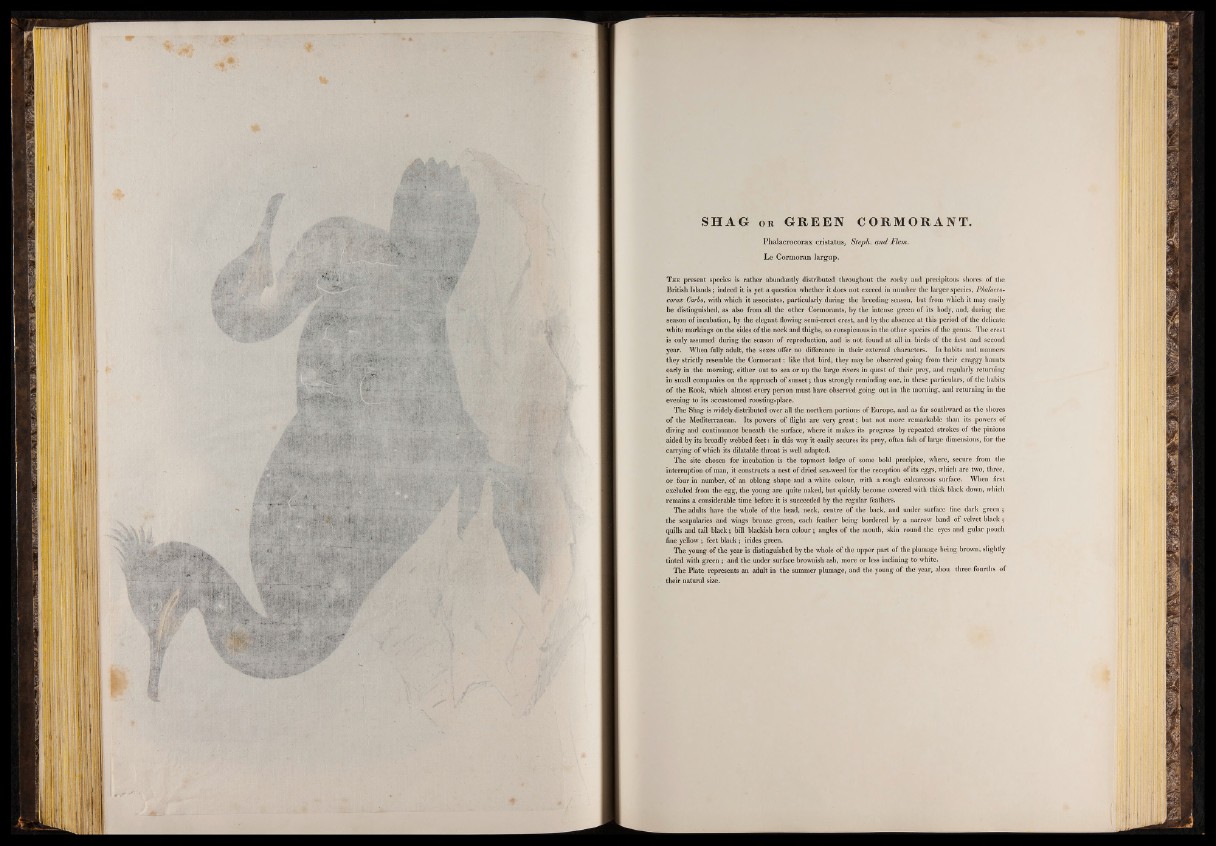
SH AG o r G R E E N CORMORANT.
Phalacrocorax cristatus, Steph. a n d Flem.
L e Cormoran largup.
T he present species is rather abundantly distributed throughout the rocky and precipitous shores of the
British Islands; indeed it is yet a question whether it does not exceed in number the larger species, Phalacrocorax
Carho, with which it associates, particularly during the breeding season, but from which it may easily
be distinguished, as also from all the other Cormorants, by the intense green of its body, and, during the
season of incubation, by the elegant flowing semi-erect crest, and by the absence at this period of the delicate
white markings on the sides of the neck and thighs, so conspicuous in the other species of the genus. The crest
is ouly assumed during the season of reproduction, and is not found at all in birds of the first and second
year. When fully adult, the sexes offer no difference in their external characters. In habits and manners
they strictly resemble the Cormorant: like that bird, they may be observed going from their craggy haunts
early in the morning, either out to sea or up the large rivers in quest of their prey, and regularly returning
in small companies on the approach of sunset; thus strongly reminding one, in these particulars, of the habits
of the Rook, which almost every person must have observed going out in the morning, and returning in the
evening to its accustomed roosting-place.
The Shag is widely distributed over all the northern portions of Europe, and as far southward as the shores
of the Mediterranean. Its powers of flight are very great; but not more remarkable than its powers of
diving and continuance beneath the surface, where it makes its progress by repeated strokes of the pinions
aided by its broadly webbed feet: in this way it easily secures its prey, often fish of large dimensions, for the
carrying of which its dilatable throat is well adapted.
The site chosen for incubation is the topmost ledge of some bold precipice, where, secure from the
interruption of man, it constructs a nest of dried sea-weed for the reception of its eggs, which are two, three,
or four in number, of an oblong shape and a white colour, with a rough calcareous surface. When first
excluded from the egg, the young are quite naked, but quickly become covered with thick black down, which
remains a considerable time before it is succeeded by the regular feathers.
The adults have the whole of the head, neck, centre of the back, and under surface fine dark green ;
the scapularies and wings bronze green, each feather being bordered by a narrow band of velvet black;
quills and tail black; bill blackish horn colour; angles of the mouth, skin round the eyes and gular pouch
fine yellow; feet black; irides green.
The young of the year is distinguished by the whole of the upper part of the plumage being brown, slightly
tinted with green; and the under surface brownish ash, more or less inclining to white.
The Plate represents an adult in the summer plumage, and the young of the year, abou three fourths of
their natural size.